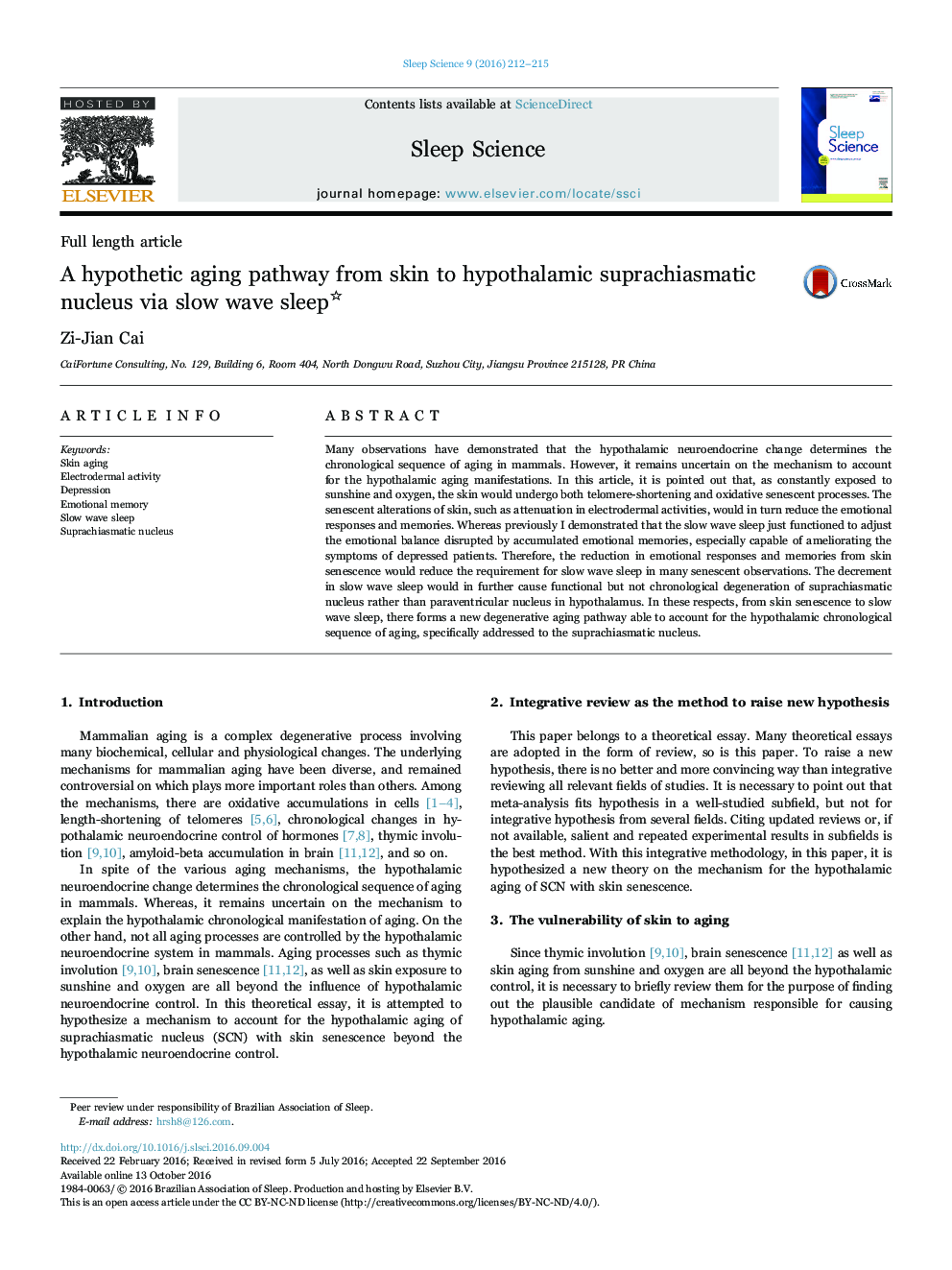| Article ID | Journal | Published Year | Pages | File Type |
|---|---|---|---|---|
| 5621753 | Sleep Science | 2016 | 4 Pages |
Many observations have demonstrated that the hypothalamic neuroendocrine change determines the chronological sequence of aging in mammals. However, it remains uncertain on the mechanism to account for the hypothalamic aging manifestations. In this article, it is pointed out that, as constantly exposed to sunshine and oxygen, the skin would undergo both telomere-shortening and oxidative senescent processes. The senescent alterations of skin, such as attenuation in electrodermal activities, would in turn reduce the emotional responses and memories. Whereas previously I demonstrated that the slow wave sleep just functioned to adjust the emotional balance disrupted by accumulated emotional memories, especially capable of ameliorating the symptoms of depressed patients. Therefore, the reduction in emotional responses and memories from skin senescence would reduce the requirement for slow wave sleep in many senescent observations. The decrement in slow wave sleep would in further cause functional but not chronological degeneration of suprachiasmatic nucleus rather than paraventricular nucleus in hypothalamus. In these respects, from skin senescence to slow wave sleep, there forms a new degenerative aging pathway able to account for the hypothalamic chronological sequence of aging, specifically addressed to the suprachiasmatic nucleus.
